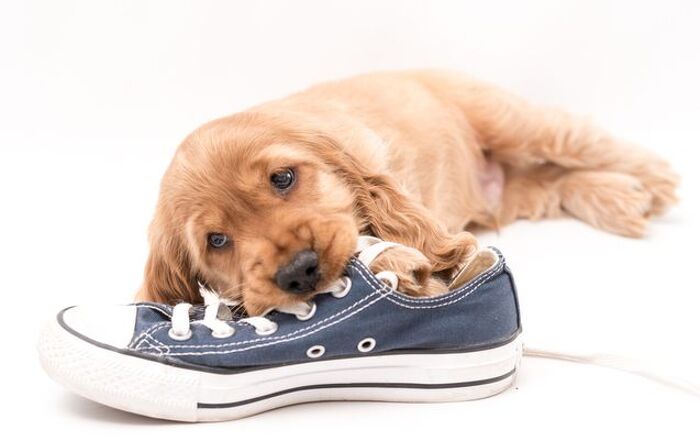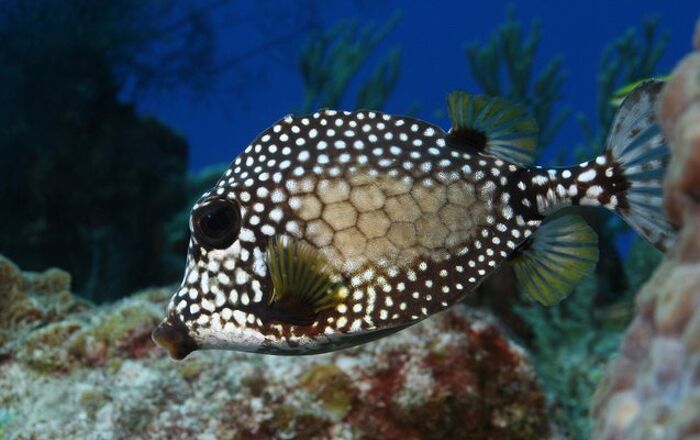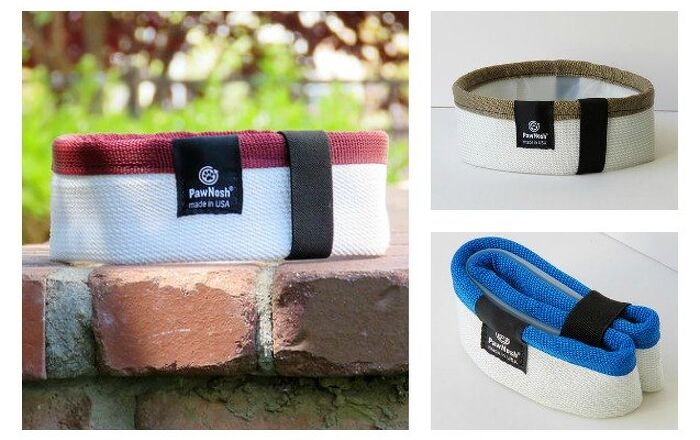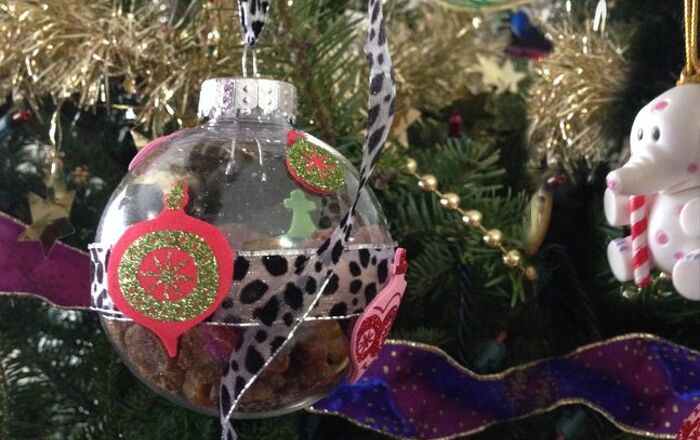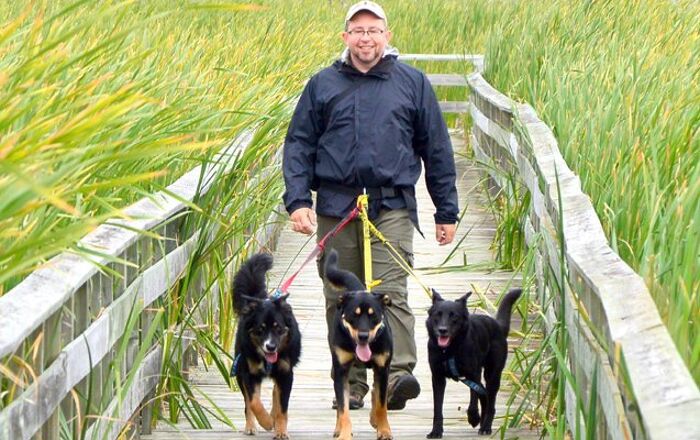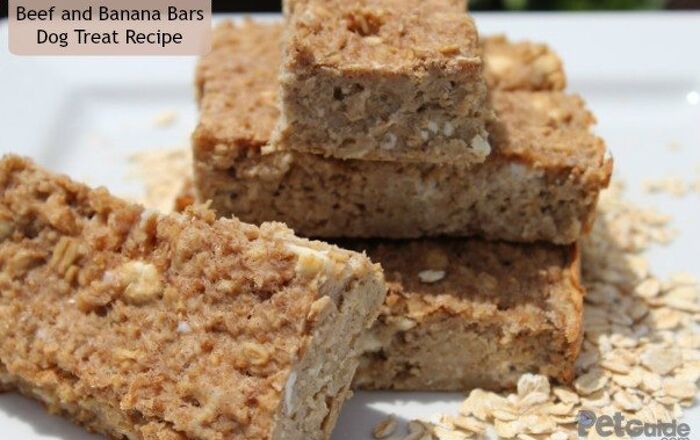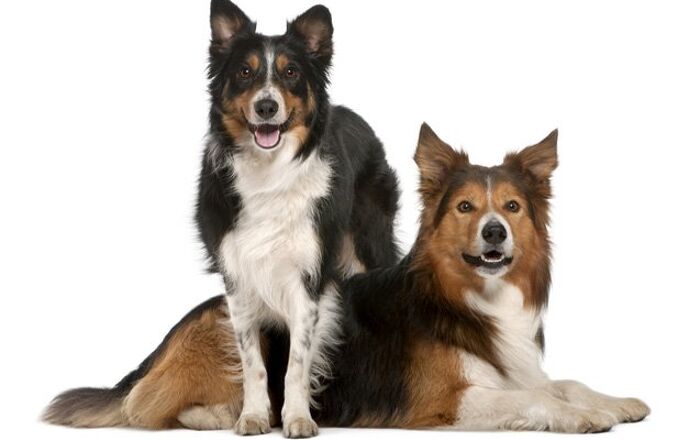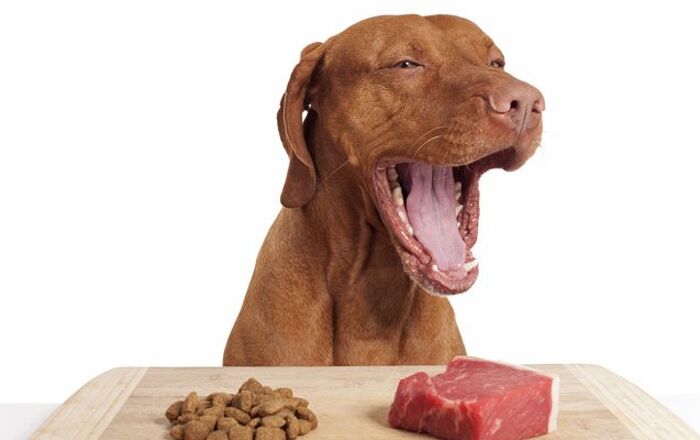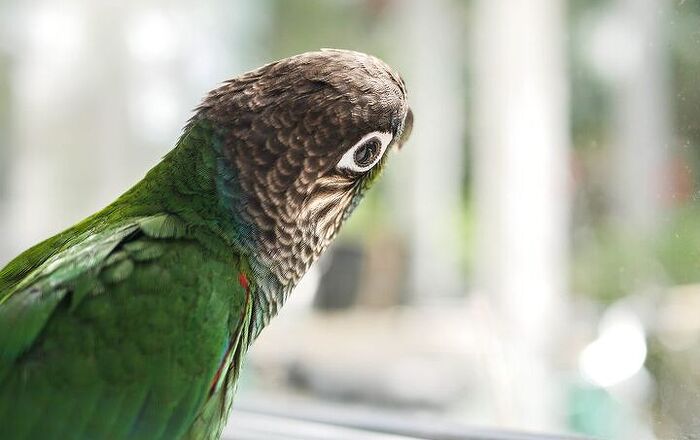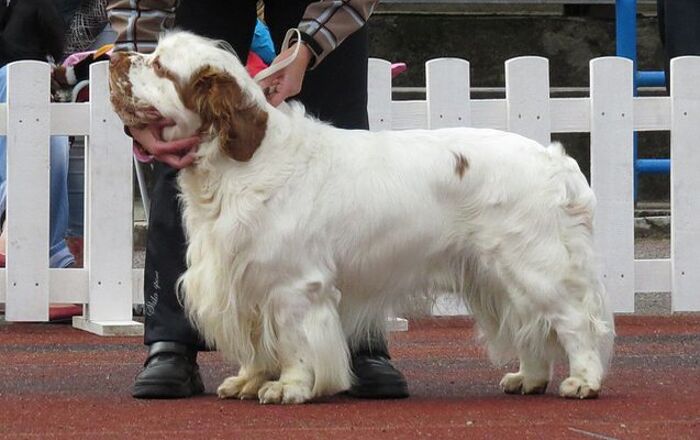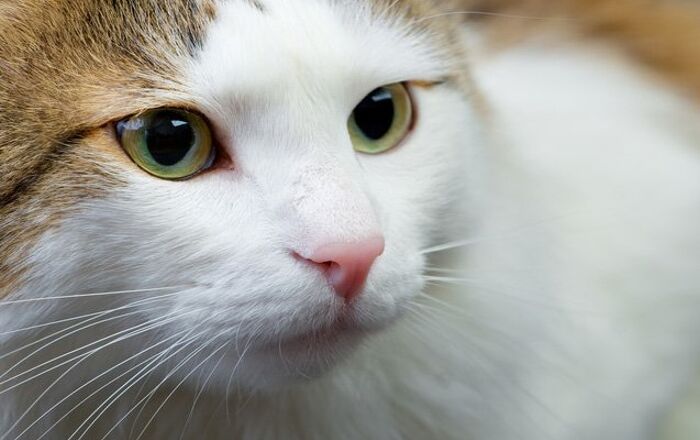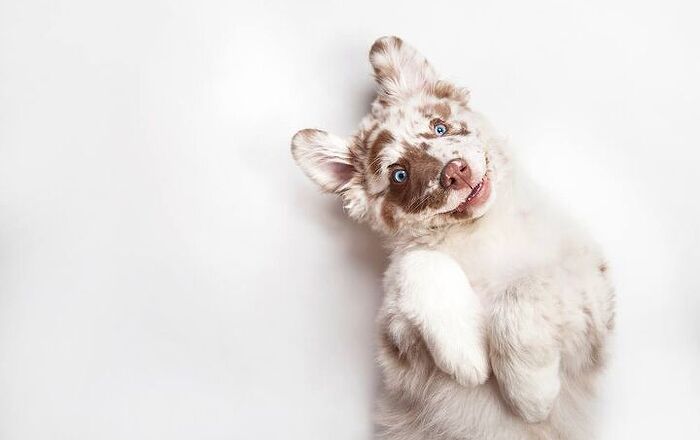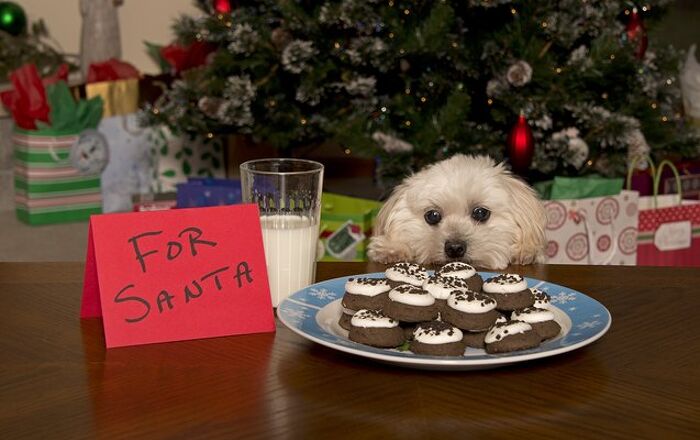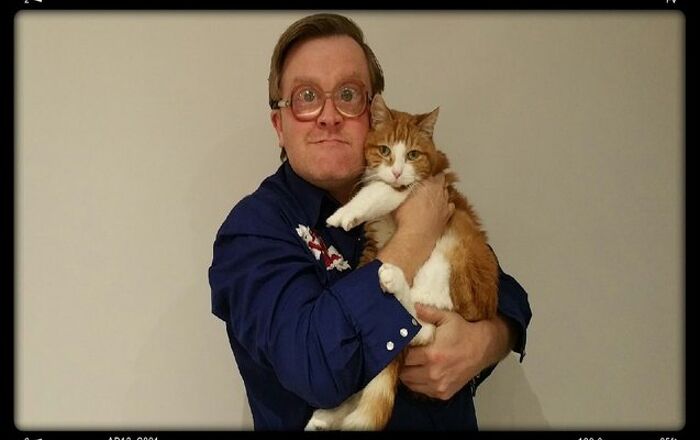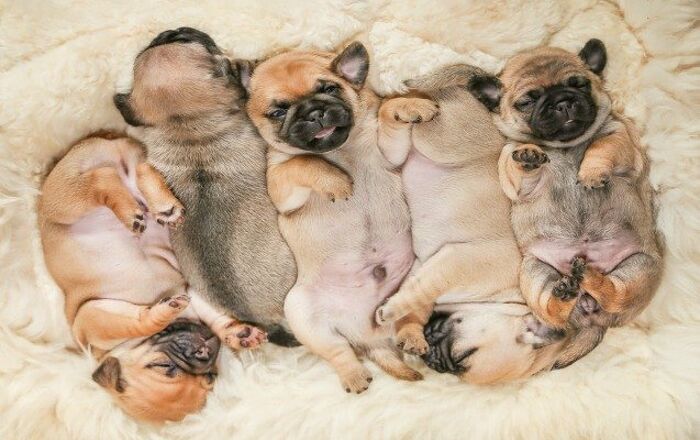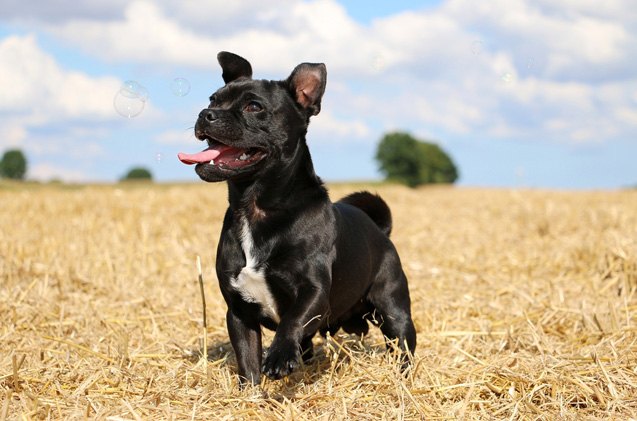
American Pugabull Basics
The bold little American Pugabull brings together the perky, friendly personality of the Pug and the loyal, protective nature of the American Bulldog for a great family dog that is highly devoted to his human pack and a superb watchdog. This beautiful boy is great with kids and other animals but only after early socialization as his guarding tendencies can make him aggressive towards other dogs and smaller animals. Because he comes from the full-of-energy American Bulldog, his ideal family will be highly active and able to devote the time necessary to keep him physically fit and mentally stimulated.
The bold American Pugabull brings together the friendly nature of the Pug and the protective characteristics of the American Bulldog.
Origin
This Designer Dog likely appeared for the first time around 30 years ago when breeders first began crossing two or more pure-breds dogs with the goal of producing a pet that would be typically healthier, sometimes non-shedding, often smaller and even gentler than many of the more popular breeds. In spite of his fairly youthful history, the American Pugabull comes from some pretty impressive lineage; the Pug dates back to ancient China where he was first bred as a pet for emperors and later lived in Tibetan monasteries where he was considered a much-loved companion by the monks. In the 16th century Pugs began to appear in the courts of Europe where they were again favored by royalty, immortalized in paintings by Goya and led a life of leisure prior to arriving to North America in the 19th century. As for the American Bulldog, this working-class pooch was originally bred for use on southern U.S. farms and ranches as a guard and hunting dog back in the 17th century. Prior to the 1980s, when the moniker “American Bulldog” was first assigned to him, this handsome pooch was known as the English White (because of his primary coloring), the “Alabama” or the “Southern Bulldog” and did in fact earn his name the hard way – being used in the dangerous practice of bull baiting.
Pedigree
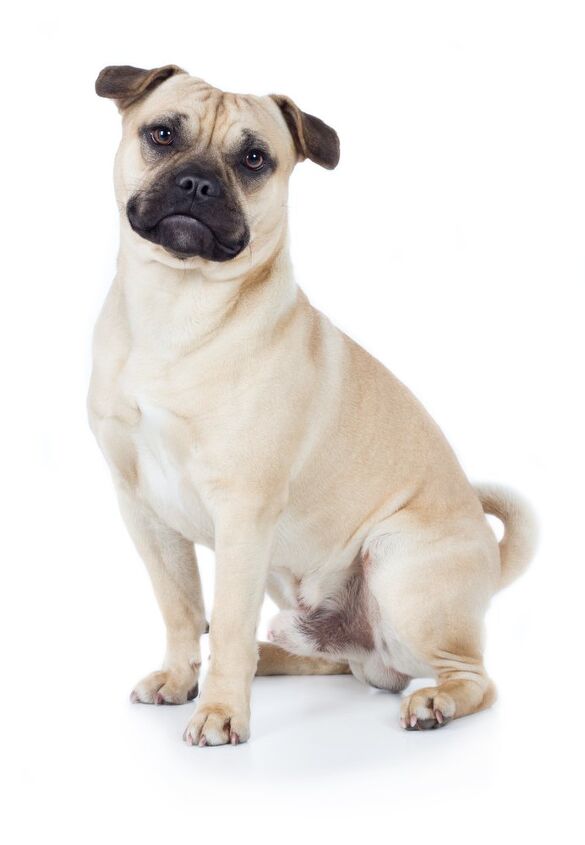
Because the American Kennel Club (AKC) does not register non-pure-bred dogs, the American Pugabull doesn’t qualify for membership however one of his parent breeds is a long-time member and a North American favorite: The Pug. Yes, the inquisitive little Pug joined AKC’s “toy” group way back in 1885 and is described as being charming, mischievous and loving. The American Bulldog has yet to become a member of this coveted club.
Food/Diet
The American Pugabull is a medium-sized dog with a fair bit of energy and a great love of play so be sure to opt for a high-quality kibble that is specifically designed to deliver the nutrients he needs for a dog his age, size and with his activity level. Because any type of Bulldog is known to love, love, love his food and with joint issues a potential health issue later in life, it’s important you establish and maintain an ideal weight for this dog and one way to do this is by feeding him two to three smaller meals throughout the day versus allowing him to free feed. Trust me, he won’t stop! Choose a food that is higher in protein over fillers such as carbs that will leave him feeling hungry and wanting to over-eat. Because this dog will likely have the flatter, brachycephalic face of the Pug, eating can be awkward and cause him to gulp air and become excessively flatulent (and food-caked). Take the time to check out some of the food and water dishes that have been designed specifically for the flat-faced dog, tilting gently to allow him clean, easy access to his food.
The American Pugabull has a playful but protective nature.
Training
The American Pugabull comes from two smart breeds and while they will be quick to pick up your commands, a stubborn streak that is common in both parent breeds means he may not necessarily obey your instructions. While the Pug can be prone to “small dog syndrome” where he feels he rules the household, the Bulldog may automatically assume the role of alpha dog and will need a strong pack leader that he can respect and accept direction from. As a result, early obedience training is critical to bringing out the best in this dog and ensuring he is a welcome addition to your family. The Bulldog’s guarding instinct can be quite strong and make him dog -aggressive so socialization from the time he is a young puppy is absolutely essential. Without it, you have a dog that can’t be integrated into households with other pets or welcomed at a dog park. It’s as simple as exposing him to new faces, sights, sounds, smells and other animals in a controlled and positive environment that will help encourage him to be more comfortable and less reactive to other dogs and small animals. With this dog, take a firm consistent approach that reinforces the rules and establishes your expectations with rewards of treats and verbal praise to help keep him engaged and reinforce good behaviors.
Weight
Once he reaches maturity, the American Pugabull will weigh somewhere between 30 and 60 pounds. This weight will vary depending on your dog’s gender but you can expect the much heavier American Bulldog to have a significant influence on your pooch’s build versus the under-20-pound Pug.
Temperament/Behavior
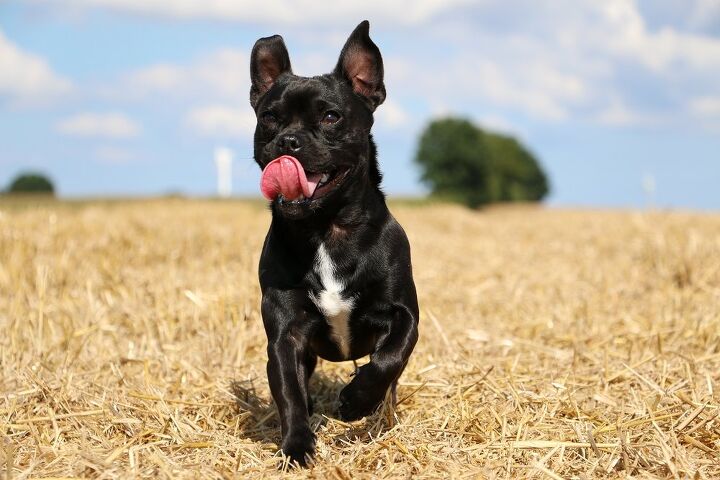
The American Pugabull has a playful but protective nature that is influenced strongly by the American Bulldog. This dog is great with kids and other dogs once properly socialized, however isn’t an ideal choice for families with smaller pets. Because of his guarding instincts, he makes a great watchdog that won’t hesitate to bark when he senses something is amiss. In fact, barking can be an issue with his parent breeds and needs to be considered when bringing this dog into your home. Because of alpha dog tendencies, training will need to specifically address his role in your family and establish his pet parent as a pack leader he can respect or you’ll find he won’t listen to commands. This pooch loves spending time with his family and because he is the offspring of two breeds that suffer from separation anxiety, you can expect that behavior to present when he is left for long periods of time. This can result in incessant barking and destructive behaviors including chewing and urinating in the home. In addition to receiving sufficient physical exercise and mental stimulation, having at least one family member home during the day would be ideal for the American Pugabull.
Common Health Problems
While your American Pugabull’s Designer Dog status means he will typically be healthier than his pure-bred parents, it’s always important to do a little research into what he may inherit down the line. With this dog, you are looking at potential respiratory issues due to his brachycephalic facial structure, cataracts and joint issues such as patellar luxation and hip or elbow dysplasia. If your pooch inherits the heavier facial folds of the Pug, skin infections can also present and while not necessarily a serious health issue, the Pug side of this little guy is renowned for his flatulence due to gulping air as he eats. The American Bulldog can be prone to deafness as well as bone cancer. Now although this list of potential health issues may seem rather daunting, it’s quite possible your pooch will live a long and healthy life without ever experiencing any of these medical issues.
Life Expectancy
The American Pugabull is a solid, medium-sized dog that is fairly active and with regular exercise, a diet designed for his age, size and energy level as well as annual check-ups with your vet to monitor his health, you can expect him to live a long, healthy life of between 12 and 14 years.
Exercise Requirements
Your new dog comes from two breeds with quite different exercise needs: The Pug loves interactive playtime with short walks while the American Bulldog needs a more rigorous workout that can involve agility and more aggressive walks. As a result, you can expect the American Pugabull to need a combination of daily short walks, the opportunity to chase balls or Frisbees and the ability to run loose to burn off a little energy. But when it comes to the “running loose” part, socialization is important before you consider taking him to a dog park. Aggressive behaviors can present and you don’t want him to become persona non grata. With your pooch likely being brachycephalic (flat faced) breathing can be a big issue during warmer weather or with over-exertion so pace your activities and plan some indoor playtime for when temperatures soar. Big tip – this dog needs an outlet for his energy so never, never skip his activity lest he develop some destructive behaviors to show his displeasure.
The American Pugabull still retains his instinct to chase so requires early socialization.
Recognized Clubs
The American Pugabull is a Designer dog and because this means he is a cross-breed, he will never be considered for the coveted American Kennel Club’s roster of purebred dogs. He is however, recognized by two lesser known groups including the Dog Registry of America, Inc. (DRA) and the American Canine Hybrid Club (ACHC).
Coat
Your American Pugabull will inherit the soft, shorter single-coat of his parent breeds, however unlike the heavy-shedding Pug this dog will likely be a moderate-shedding dog, similar to the American Bulldog. This means that a thorough brushing just two to three times a week should be sufficient to keep loose hair in check and his coat looking it’s best. As is the case with most dogs, bathing should be done only on an as-needed basis to prevent his coat from drying out, however if your dog inherits the facial wrinkles of the Pug you will need to conduct a daily inspection and cleaning to prevent infections that can happen when food, dirt and bacteria are allowed to build up over time. Similarly, his floppy ears will need to be inspected and cleaned weekly to prevent that funky smell that comes with yeast infections.
Puppies
The American Pugabull comes from two breeds that can be strong-willed, stubborn and on the Bulldog side, rather aggressive toward other animals when not properly socialized. As a result, you want to begin obedience training and socialization while this pooch is very young and willing to listen and obey commands. Socializing him can begin when he is just a few weeks old and include gentle handling with controlled, positive exposure to new situations, sights, sound, faces and animals that will all help him build a comfort level and confidence that discourages bad behavior as he gets older. And with future joint issues a concern, it’s important that playtime and exercise sessions with this puppy not over-exert his tiny limbs. Injuries that happen now can present as serious problems down the line.
Photo credits: SikorskiFotografie/Shutterstock; Bianca Grueneberg/Shutterstock

